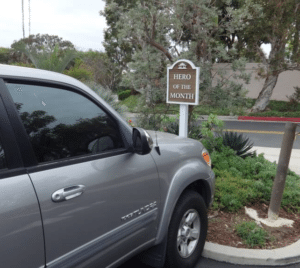Point of sale software: A Few Pointers
Point of sale (POS) and office software is only important to a business owner or manager who wants to be in control of the business and not blind. If properly used it shows the health of the business at any point in time, which can be a valuable business tool for producing higher profit margins and less waste.
Two things must take place before software truly does become a key tool: Users must create transactions correctly, and management must read reports properly. When this takes place the software becomes the steering wheel of the business. Key reports measure current performance against historical performance and budgeted forecasts.
If any of this sounds complicated, be assured when done right it does not have to be. Most software systems seem complicated because they were set up wrong from the start. They could have been set up by inexperienced staff or altered at the business owner’s request. The end result of an incorrect setup is a cumbersome, unpredictable and expensive system.
Software is important for owners and managers who want accountability and the ability to raise profit margins. Managers can run 5-8 key reports a day to have complete visibility in all aspects of the business. The key reports enforce accountability, show what sales mean in terms of profit for the business and provide up-to-the-minute financial information on the health of the business. If any of this matters to an owner or manager, software is the most important tool to have, at least for any business that wants to grow and perform consistently year after year.
Inventory Management
Inventory is never an easy part of the business. Many small businesses do not have a lot of skills in maintaining a true perpetual inventory system. When inventory is handled as a standardized process of receiving, selling and maintaining inventory it becomes a much lower labor issue. Most small businesses claim they cannot afford to run inventory in this manner, but the opposite is true. Most small businesses drive up their costs by ignoring standard practices of perpetual inventory. Utilizing the received inventory in the software system means an accurate reading, easy printing of tags with barcodes for inventory when needed and quick scanning of inventory at the register when sold. Team members can also quickly perform cycle counts of inventory to check accuracy and dump product that is no longer salable. The end result of this simple process means accurate inventory with less labor.
POS
Does customer service seem like an important issue in retail sales? If your answer is yes, then POS software is a key tool in improving customer service. Cashiers at any level can quickly tell customers by phone or in person what items are in stock. They can also search inventory based on characteristics described by the customer and hand them a list of items or walk through the facility showing them the items on the list. Cashiers can also scan items on a wireless handheld device and complete the sale while walking with the customer. The handheld can also be used to bypass the checkout line by getting the customer’s items scanned before they even get to the register. Once at the register, all they need to do is pay, reducing the time a customer has to wait in line.
Ordering and Receiving Inventory
Managing orders, what remains outstanding and when it is expected is a difficult job. Not having the right inventory at certain times of the year means less profit and fewer returning customers. POS software can give key reports that will show the buyer what has sold at specific times of year, how often items turn over during those times and what is the comparison in sales from previous years. Once these reports are utilized, the system shows buyers what is open to buy based on budgets set, what has been committed for vendor orders and what has already been received. As items are received, tags with barcodes can be automatically printed and payables are created.
Managers and owners can quickly see the financial health of the business for the current point in time, or compare to previous years for that same point in time.
Accountability on purchasing budgets causes good sales goals and general cost controls by department or accounting codes. Whole reports for profit and loss for the entire business can be used or they can be broken down by department codes, jobs or accounting code totals.
Utilizing the Software
Keep it simple in how POS systems are used or you may end up having useless data and not maximizing the program. Many software systems are underutilized for three main reasons:
- Hardware setup is complicated and unreliable. For many small businesses hardware is a nightmare, and they know very little about setting up a reliable low-maintenance system. Those businesses get much less out of their software than they should.
- Most software is underutilized because the set up is incorrect or overly complicated. Many business owners or managers alter the standard way the software is used to try to capture different data they think is valuable. Many times they misunderstand how the software works and could have captured that same data using standard methods in the software. They were used to doing it one way and forced the system to work with what they were familiar with. In fact, many times their alteration drives up inefficiencies of the system and requires labor to maintain the system, which raises costs. Simple use of software means quicker entry of data, higher use rates at all levels and better reporting for management to make good decisions.
- Another reason most software systems are poorly used or underutilized is because of lack of good software training for staff. Many businesses don’t spend enough money on training and lose 40 percent of what the software can do to save money on the purchase of the system. Well-trained users means management can rely on the software as a key tool to running the business.
Software becomes crucial when it is installed and used properly. It gives up-to-the-minute performance of your business, which can also be measured against previous performance to show growth or change. Accountability across entire departments of the business becomes possible with simple application of good software. Immediately, management can see what inventory makes the most money, when items turn over the most, what departments are meeting budget and profit forecasts, and what the general health of the entire business is, and they can do it on one page summarized onto the classic balance sheet that tells all about any business in a glance.


















 Videos
Videos





